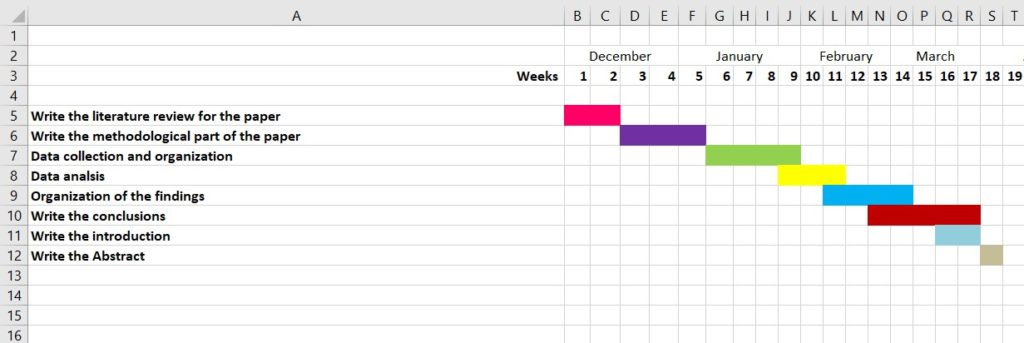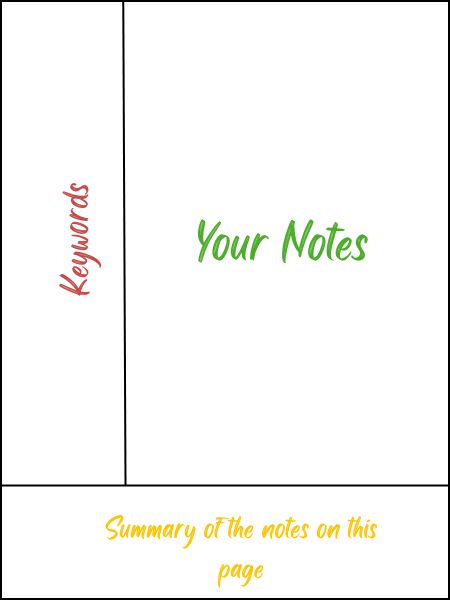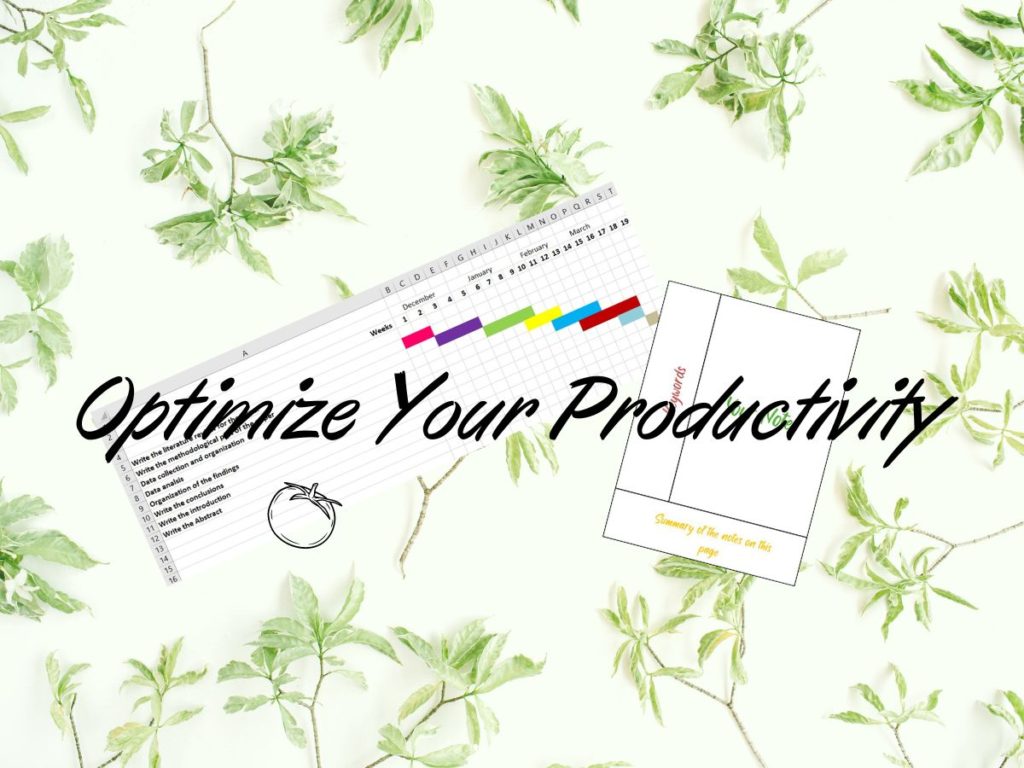Most people would like to be more productive than they are. It doesn’t matter if they are already super-productive or struggling to end projects, instead: optimizing productivity is always a good idea. Time is money, as they say, or at least it has an important opportunity cost. If we can save time, we can engage in fulfilling activities, spend more time with family and friends or launch a side hustle that may one day become our core income. Maybe, we just want to relax more and get our beauty sleep, and we want to have time to do that with no regrets.
For productivity maximization focus should be on time and note management. Time is pretty obvious: managing time well will give you more disposable time. Notes may not see so straightforward, and most people may associate notes with a studying path only. However, that is not the case. Notes are a great instrument for any project you wish to undertake: business, personal development, studies, daily organization and so on. The things that can be supported by good notetaking are endless.
1. Time Management
One of the most important steps to manage time is to plan. While it is important not to become slaves to the plan, in the sense of allowing for fluctuations and flexibility, a good plan is the best structure you can build to support a project you are undertaking. There is not just one single way to plan: tools and apps have been developed and built.
1.1 Gantt Chart
This is one of the most widely used tools to plan. The chart revolves around the tasks needed for the project you are embarking and the time to complete them. You will note each deadline you may have for the tasks listed, and work on building your project around that. It is quite easy to build, and you can find pre-made resources with the Gantt chart scheme.
The two entries of the chart are represented by the tasks (usually on the left side) and the time on top. You can choose your own time frame. You may want to indicate weeks, months, or whatever suits your planning best. It seems trivial at first, but the Gantt chart gives you the possibility of going deeper than you think with your planning.
This is a simple example of how the Gantt chart could look like, even though you can choose to make it as detailed as you wish:

Why is the Gannt Chart Important?
This way of charting allows you to mentally analyze your workload, specifically identify the tasks that will lead you to the completion of your goal and to make an estimation about time completion for each one. Not only that: the chart also allows you to visually interpret your workload – great for those whose brain works best with images – and to see when some tasks may be overlapping.
While many know what they want to achieve, they don’t always have a clear scheme in mind about the steps needed to reach that goal. The Gantt chart forces you into proper identification and organization. This practice alone will save you a lot of time when undertaking any activity: knowing exactly what to do is essential to eliminate frustration and achieve goals.
Moreover, estimating completion time – and adapting the chart, if necessary, while completing the tasks – will give you a proper indication of what to expect. This will help you avoid arriving close to the deadline with a load of work that is too heavy to handle and will help you visualize your path in case you have an open deadline. Most people underestimate the time it takes to reach certain goals and the lack of short time results sometimes makes them lose motivation and leave projects behind, albeit those may have been good projects with actual success possibilities.
In Short: What is the Gannt Chart Used for?
The Gannt Chart is used to manage any project that needs scheduling, hence, any project. It helps you sort out and visualize your tasks and lets you organize them according to time frames. You will record the projected length of the process needed for each task of the project, so to have a clear understanding of what you have to do and how tasks will overlap, if they do, or how they will develop in general.
It forces you to deeply analyze each task that will take you to your goal – being it personal, professional, or educational – and build an estimate of how much time and effort you will have to invest on each task. This will help you stay grounded when thinking about your project. It will give you a reasonable time frame upon which you will build your completion expectation and will save you the frustration of not knowing when and where things are going.
1.2 The Pomodoro Technique
Once you’re done planning and organizing, you have to actually start working. That may be harder if you are a procrastinator. Giving structure to your time can help you in every situation. The Pomodoro technique is very simple, and I have never seen it fail in any of my students and colleagues.
The technique requires that you divide your time in slots: a 25-minute slot, which will be dedicated to doing the work you want to focus on, and a 5-minute slot, which will be dedicated to a break, during which you will reward your effort. Repeat as many times as you need.
What do you do in a 25-minute Pomodoro session?
You work on the task you identified, with NO DISTRACTIONS. This means you should prep your environment and try to eliminate as many distractions as possible: place your phone in another room if you can’t control your instinct of checking it, block social media on your computer if needed, ask people who live with you not to interrupt. It is important that you dedicate your focus on the task. Once you start using the technique you will see that focus will come easier with time, and you won’t need to prep your environment as much, because you will stay focused no matter what. That is one of the best aspects of this technique.
What do you do in a 5-minute Pomodoro session?
The Break
You take a break, and you reward your effort. Breaks during the work sessions help your mind stay focused, according to scientific studies, and it also helps avoid cognitive boredom. Your brain will stay curious and will not lose focus because of loss of interest. Breaking your sessions won’t give your brain the chance to lose motivation.
If you do more than one session of the Pomodoro technique, give yourself a longer break – from 15 to 30 minutes – after a cycle of three Pomodoros.
The Reward
An essential part of the pomodoro technique is to give yourself a reward. Your brain will use the power of positive reinforcement as a tool and will release dopamine, building a positive association with the work you have to carry out. You will end up enjoying studying or working much more than before. You will keep motivation and focus – you will get more productive. The rewards will help you train yourself to that specific positive behavior.
What types of rewards should you give yourself? It doesn’t matter much what you choose, as long as you feel rewarded (and as long as the reward doesn’t harm you!). You could choose to pet your cat, stretch, listen to a song you have been looking forward to enjoying. As long as you keep it short but enjoyable, that will do.
Pro tip
Initially, give yourself a reward at every break. That will help you establish the behavior. Once you feel quite confident about your brain training, start giving rewards randomly. Do not always reward yourself at the break: surprise your brain. This will help you keep your brain active and motivated. Constant reward is great to establish a pattern and behavior, but once you got the result your brain may get bored. It starts expecting the reward, hence the reward itself doesn’t keep the dopamine production up. If the reward comes in at random, though, the brain will stay motivated, knowing that a reward may come, so it will keep releasing the dopamine and you will keep getting the benefits from its activity and curiosity.
2. Note Taking
Note taking is an essential part of learning and of thought organization. Notes are valuable in a business environment as much as they are in a school environment, and they are of extreme importance in most areas of life where knowledge and thought processing are of essence (hence, in every area of life).
While there is not a single method of writing down your notes that can be considered superior to others, because we are all different and our brains don’t all work the same, there is a set of techniques that have been developed and tested to bring value to a variety of people. Before going deep int those, however, there are a couple of points that one should address.
2.1 The Cornell Method
The Cornell method, developed by – you guessed it – Cornell University, is a method about note organization and management. The way it is constructed leads you to approach your notes and the topic in a manner conducive to good and easier learning. While the Cornell method does not tell you if you should write your notes in a schematic way, associate visuals with them, and so on, it guides you through three important steps that are ging to be the building blocks of your understanding and knowledge construction.
It starts by telling you how to divide your sheet of paper (or your digital sheet of paper) whatever works for you. Taking notes by hand has been proven to help with the learning process, but you do you.
The sheet should be divided in three sections:
1- The largest section is dedicated to your actual note taking, where you will write down what you are listening to, or reading, in whichever form suits you best.
2- A side column will be dedicated to keywords related to the notes you have in your largest section.
3- A small bottom section will be dedicated to writing the summary of the notes you have on that specific page. ONLY the notes you have on that specific page.
The page would then look like this:

Why is the Cornell Method so good?
This method of taking and organizing notes guides you through important steps in knowledge development and it is focused on comprehension rather than mechanic memory. This helps in actually reducing the time needed to study, have a better comprehension and organization of the thoughts related to the topic, it helps you reflect on what you are learning (and hopefully create connections in your brain while you are doing so), and it makes reviewing the material much easier.
The Keyword section leads you to having to identify the core concept of each part of your notes. To find them, you will have to process the information rather than just superficially gather it, helping you to internalize it. The summary section takes that process to the next level and leads you to make association, reinterpret and connect everything important that you can find on the notes.
This method can be used to organize any type of information that you need to process, understand and organize: it will help you with meeting notes, school notes, even personal notes. It can be valuable in problem solving and can help with a variety of situation where you need to organize and properly understand your thoughts.
2.2 Which Method is Better for Taking Notes?
Our world is digital and we have apps available for everything. There are a variety of apps or note taking, and people have been taking notes on their computer for a long time. At work, especially, it is easier to just write and organize notes in a digital format, since that makes it much easier to share if needed and since people are mostly working at their computers.
However, research has shown that taking notes by hand can be a much more powerful and effective method than taking notes digitally.
Why is it better to take notes by hand than on the computer (or on any app)?
Taking notes on an app or computer may make the process of taking notes easier. It surely does. It may even help organize them for some people. However, since you now know the Cornell method, you really don’t need to worry about that. So, digital note taking isn’t bad if considered in the realm of practical note writing. However, there is a catch, and it is a pretty big one: the process of digital note taking may hinder learning.
The biggest advantage of taking notes by hand is that the note taker is processing information before writing it down. People who take digital notes, however, are more prone to take notes verbatim, just slavishly repeating on paper what is being said by somebody or what is written somewhere. People can type faster than they can write, hence they do not need to process the information before typing it down. However, when you have to put it on paper, you won’t be able to keep up the same speed and you will be prone to identify the core structures of the information that is given to you and build the notes upon that. This was confirmed in the 2014 study by Mueller and Oppenheimer.
So, while digital note taking have its advantages in providing the note taker with more tools, it also puts the note taker in the position of having to spend more time on what they are studying: they skip a first stage of information processing that is essential in taking notes by hand, instead.
Another difference between the two methodologies of note taking lays in the brain pathways they activate: they activate different parts of your brain. According to the Norwegian Center for Learning Environment and Behavioral Research in Education, the process of taking notes by hand activates more parts of your brain due to the physical movement necessary to write the notes. That type of brain activation then leads your brain to more easily retain the information and make the needed “decluttering”; it helps your brain choose which part of the information is conducive to understanding and has to stay, and which part has to go. Let us not forget that the neuroplasticity of the brain is something essential for our lives and for our learning experience. An active brain, a more active brain, is something we should aim for.






